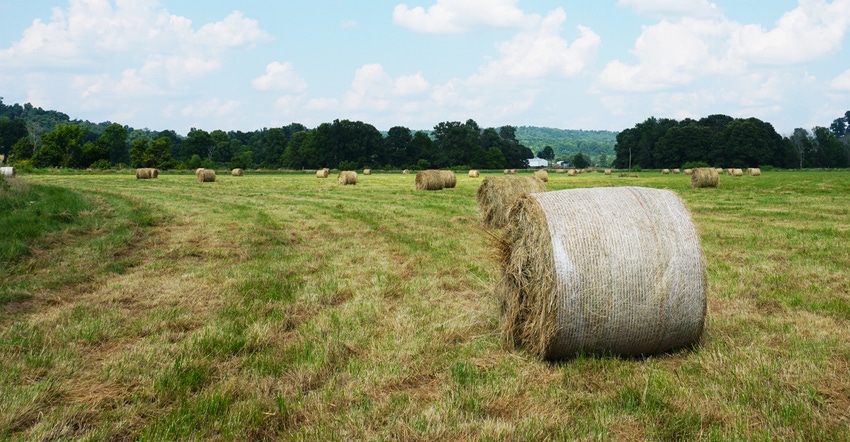November 27, 2018

By Christine Gelley
That saying “one man’s trash is another man’s treasure” usually does not apply to hay — but as difficult as haymaking was in Ohio this year, it may be true.
The “man” mentioned could be yourself in 2017 versus yourself in 2018. Based on what is available this year, you may be inclined to lower your standards of hay quality to make it through the winter.
But, how low is too low when it comes to hay quality? The answer depends on your class of livestock, their nutritional needs and your access to supplemental feed.
Without knowing the actual nutritive value of the hay, all recommendations are relative and subject to error. The only way to adjust your feeding program confidently in relation to hay quality is to have hay analyzed by a laboratory.
Characteristics like hay color, scent, dustiness and texture are all indicators of hay quality, but are not definitive. On the other hand, mold and poisonous weeds are indicators of poor quality and should be avoided if found in stored hay.
Whether you choose to buy hay or make it, having bales tested can save you time and money over the winter. Pay for a good test that tells you more than just crude protein. Levels of digestible fiber and net energy are important, too.
Perform separate cutting samples
Sample multiple bales from each cutting, and sample cuttings separately from one another. First-cutting bales should be tested separately from second-cutting bales.
When you receive your test results back, work with a nutritionist at your feed mill, your veterinarian, and/or your county Extension educator to formulate a feeding program based on what your hay can provide.
Depending on the price of local and regional grain commodities, you might find more value in supplemental feed than your hay supply.
Check the current market prices for hay that align with the quality of what you have, and negotiate sale prices based on those two factors.
Once you have found hay worth feeding, one of the best ways to preserve your treasure is to store it out of the elements.
Moisture damage can turn that treasured hay into trash over time. With that in mind, store bales on high ground, above the soil surface if possible. Moisture can be wicked into the bale from the ground. Keep bales covered to prevent seepage into the bale from rain and snow. Air temperature and humidity will affect how significant damages can be.
Round bales stored outside should be oriented with the buff sides facing each other, with the line of bales proceeding north-south rather than east-west, and with 3 feet between rows. This will allow the bales to dry as fast as possible after a precipitation event.
Hay bale damage by the elements significantly increases the amount of hay waste you will have. On a 5-foot round bale, the outer 4 inches makes up 25% of the total hay. Which means, if that 4 inches is wasted, you will need 25% more hay to feed your animals than you initially accounted for.
Storage
When buying hay, ask questions about storage. If the hay has not been tested, request a test. If it has been tested, ask to see the results. If the test was done months before you are there to shop, it is likely that the nutritive value will not be as good as it once was.
Think of a hay test as an appraisal of valued items. It is the adviser you approach to learn the market value of your perceived treasure. Then, do your best to preserve its condition until you are ready to trade it in for a return on livestock performance.
For more information on topics such as how to perform a forage test and interpret test results or the basics of making high-quality hay, consult your local Extension office.
Gelley is the Noble County (Ohio) Extension educator, agriculture and natural resources. Call her at 740-732-5681, 567-215-5677 or 740-732-5434; or email her at [email protected].
You May Also Like




